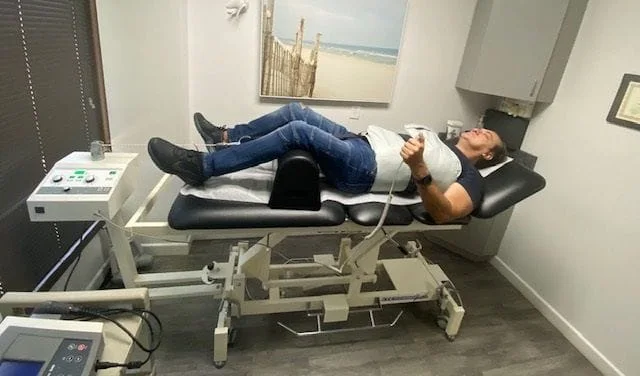
Spinal decompression and flexion-distraction are both non-invasive treatment techniques used in chiropractic care to address various spinal conditions and related symptoms. While both methods aim to alleviate spinal pressure and promote healing, they differ in their approach and the conditions they are commonly used to treat.
Spinal Decompression:
Spinal decompression therapy involves the use of a specialized mechanical traction table or device to gently stretch the spine. The goal of spinal decompression is to create negative pressure within the spinal discs, promoting the retraction or repositioning of herniated or bulging discs. This negative pressure can also facilitate the influx of nutrients, oxygen, and hydration into the affected discs, supporting the body's natural healing processes. Spinal decompression is often utilized to address conditions such as herniated discs, degenerative disc disease, facet syndrome, and sciatica.
Flexion-Distraction:
Flexion-distraction, often referred to as the Cox Technic after its developer, is a chiropractic technique that involves the use of a specialized treatment table designed to provide gentle, rhythmic, and controlled traction to the spine. The table allows for controlled flexion and distraction of the spine, particularly in the lower back (lumbar spine). Flexion-distraction is commonly used to address conditions such as disc herniation, spinal stenosis, facet joint pain, and other lumbar spine conditions. The technique aims to increase intervertebral disc space, reduce pressure on spinal nerves, and improve spinal mobility.
Key Differences:
· Approach: Spinal decompression utilizes mechanical traction to create negative pressure within the spinal discs, while flexion-distraction involves controlled flexion and distraction movements applied to specific spinal segments.
· Targeted Areas: Spinal decompression can be used to address both cervical (neck) and lumbar (lower back) spinal conditions, while flexion-distraction is primarily focused on treating lumbar spine conditions.
· Conditions Treated: Spinal decompression is commonly used for herniated discs, degenerative disc disease, and related conditions, whereas flexion-distraction is often employed for lumbar disc herniation, spinal stenosis, and facet joint problems.
It's important to note that the selection of a specific treatment approach should be based on a thorough evaluation and diagnosis by a qualified healthcare professional, typically a chiropractor or other



